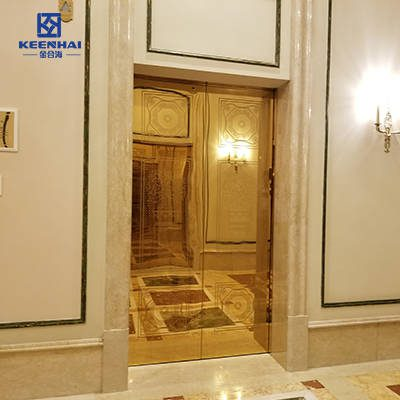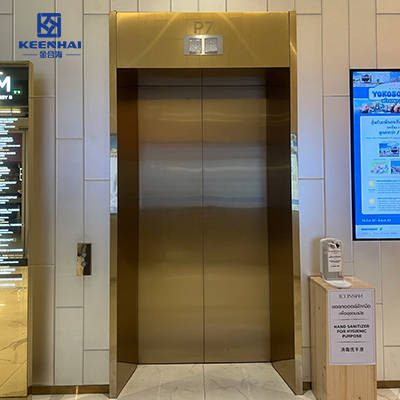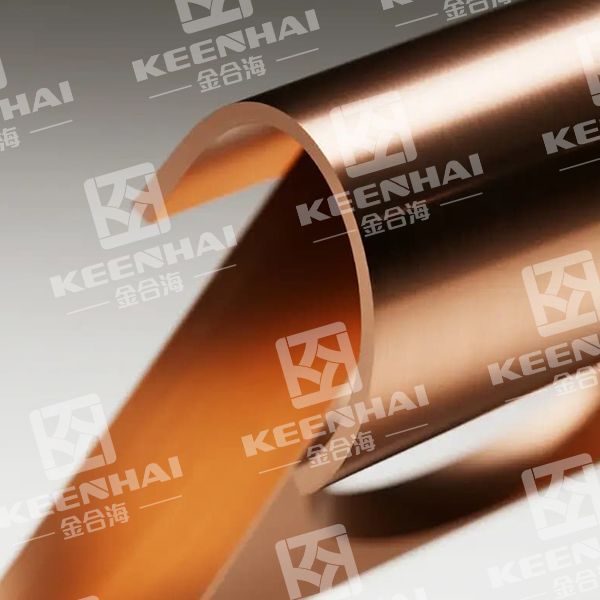In 2025, a typical stainless steel elevator door costs between $1,500 and $5,500, depending on factors like material grade, door type, and finish. Residential doors are usually cheaper, while commercial or high-rise buildings often require custom dimensions, fire-rated frames, or PVD-coated finishes, pushing costs higher. Including installation and hardware, the total investment can vary significantly, but stainless steel offers long-term durability and low maintenance.
1. Average Cost Range of Stainless Steel Elevator Doors
When planning an upgrade or a new building installation, understanding the price range of a stainless steel elevator door is essential. These doors are popular in both commercial and residential buildings because they combine modern aesthetics with strength and durability. In most cases, prices vary widely based on door type, surface finish, and automation features.
1.1 Typical Price Range for Residential and Commercial Models
De average cost of stainless steel elevator doors in 2025 typically falls between $1,800 and $6,000 per set, depending on where they are used.
Residential elevator doors, often smaller and less automated, range from $1,800 to $3,000. These are commonly installed in luxury homes or small apartment buildings, where a clean brushed finish and quiet motorized operation are enough.
Commercial models—such as those in office towers, hospitals, or hotels—cost significantly more, ranging from $3,500 to $6,000. They often feature mirror-polished finishes, fire-rated cores, og automatic sliding systems for higher traffic areas.
For example, a stainless steel residential elevator door used in a private villa might cost about $2,500, while a high-end steel lift door in a hotel with etched or PVD-coated panels can exceed $5,500 due to the luxury-grade surface.
| Type | Typical Cost (USD) | Common Usage | Finish Options |
|---|---|---|---|
| Residential | $1,800–$3,000 | Homes, small apartments | Brushed, Satin |
| Commercial | $3,500–$6,000 | Offices, hotels, hospitals | Mirror, PVD Gold, Etched |
In short, the price difference mainly reflects size, automation, and finish quality—not just material cost.
1.2 Factors That Determine the Overall Price
Several core elements directly influence how much a stainless steel elevator door costs. These factors include material grade, door configuration, finish, and labor involved in manufacturing and installation.
-
Material Grade:
Doors made from 304 rustfrit stål are standard for indoor use, while 316-grade models—more corrosion-resistant—are preferred for coastal or humid environments, typically adding 10–15% to the total cost. -
Surface Finish:
EN mirror or PVD-coated surface adds visual appeal but increases the price due to additional polishing and vacuum coating processes. -
Automation and Mechanism:
Manual swing doors are cheaper, while fully automatic sliding doors with motion sensors can double the cost because of extra hardware and safety sensors. -
Tilpasning:
Engraved logos, glass inserts, or decorative elevator entrances like Elevatorindgange i rustfrit stål can increase both material and fabrication expenses.
Bottom line: A basic brushed 304 door might cost $2,000, while a custom gold PVD-coated model with automation and fire resistance could reach $6,000 or more.
1.3 Cost Breakdown by Door Size and Finish
Door size and finish type are the two most visible factors that impact price. Standard single-panel doors are usually more affordable, while wider or two-speed center-opening doors cost more because they require stronger frames and synchronized drive systems.
| Door Specification | Size (mm) | Typical Finish | Average Cost (USD) |
|---|---|---|---|
| Standard Single Panel | 900 × 2100 | Brushed Stainless | $1,800–$2,800 |
| Center Opening | 1000 × 2100 | Mirror Finish | $3,500–$4,800 |
| Oversized Freight Door | 1200 × 2400 | Matte or Hairline | $4,500–$6,000 |
| Custom PVD-Coated Door | 1000 × 2100 | PVD Gold/Black | $5,000–$6,500 |
For example, a center-opening stainless steel automatic elevator door used in high-rise buildings typically costs 25–40% more than a standard single-panel version due to the additional mechanical structure.
A brushed model fits well in corporate or public settings, while mirror or PVD finishes are favored in luxury hotels or premium residences for their striking appearance and easy maintenance.
When specifying Stainless Steel Elevator Door Revit models for architectural planning, using accurate door size and finish data ensures proper cost estimation and design consistency—see Elevator Door Revit library for professional CAD-ready options.
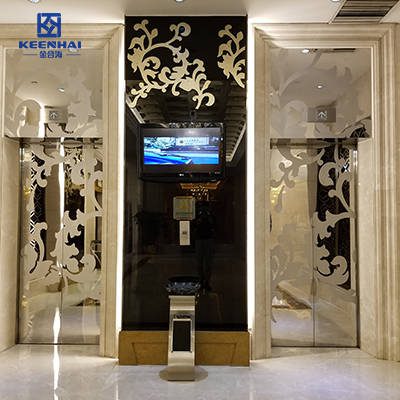
2. Key Factors Influencing Elevator Door Prices
When it comes to planning a modern building or renovation, understanding what truly drives the cost of a Stainless Steel Elevator Door helps architects and developers make smarter budget decisions. The price is not random — it’s shaped by material grade, finish, design complexity, and even where the door is manufactured.
2.1 Material Grade and Surface Treatment (Brushed, Mirror, PVD, etc.)
The material grade and surface finish are the first and most visible factors that define the price of an elevator door. Most commercial projects use 304 rustfrit stål, a durable and corrosion-resistant option suitable for indoor environments. However, in coastal or humid areas, 316-grade stainless steel is the preferred choice due to its higher chromium and nickel content, which enhances its rust resistance — typically increasing the cost by 10–20%.
When it comes to surface treatments, the range of finishes plays a significant role in the total cost:
-
Brushed or hairline finishes are budget-friendly, offering a clean, industrial aesthetic.
-
Mirror-polished finishes add elegance but require extensive polishing, which makes them pricier.
-
PVD coatings, like gold, bronze, or black titanium, are luxury options. Though initially more expensive, they last longer and resist scratches and fingerprints better.
| Surface Finish | Appearance | Holdbarhed | Typical Price Impact |
|---|---|---|---|
| Brushed / Hairline | Matte, subtle texture | Høj | +0% (base price) |
| Mirror Polish | Reflective, glossy | Medium | +15–25% |
| PVD Coated | Premium metallic color | Very High | +25–40% |
For example, a mirror-finished steel lift door in a luxury hotel lobby could cost around $4,500, while a PVD gold stainless steel automatic elevator door in a high-end shopping mall may exceed $6,000, reflecting its premium craftsmanship and longevity.
2.2 Design Complexity and Customization Level
The more complex the design, the higher the price. A standard single-panel elevator door costs less to fabricate than a multi-panel, laser-cut, or glass-integrated design. Every added element—whether it’s custom etching, decorative lines, or logo integration—increases both production time and labor cost.
Here’s what typically drives up the cost:
-
Door Configuration: Center-opening or telescopic doors require additional guide rails and synchronization systems.
-
Automation Level: Fully automatic sliding doors, often used in commercial settings, can cost up to twice as much as manual swing doors.
-
Tilpasning: Features like laser engraving, embossed brand logos, or glass inserts enhance visual appeal but also require precision fabrication tools.
For instance, in corporate buildings, a custom brushed stainless steel elevator door with decorative etching may cost 25–30% more than a plain brushed version. Meanwhile, a residential model from Stainless Steel Residential Elevator Doors with minimal detailing stays within a modest budget range while maintaining a sleek aesthetic.
That’s why design discussions should happen early in the project — they can shift total door cost by thousands of dollars.
2.3 Brand, Manufacturer, and Country of Origin
Where the elevator door is made and who makes it can dramatically change the price. Established manufacturers with certified production standards and imported machinery generally charge more—but they deliver consistent quality and durability.
For example:
-
Local manufacturers often offer competitive pricing but may have limited customization options.
-
International brands or certified suppliers such as those producing Elevatorindgange i rustfrit stål for commercial towers typically use higher-grade materials, precision welding, and robotic polishing systems, resulting in tighter tolerances and smoother finishes.
Country of origin also influences cost. Doors produced in regions with lower labor costs (e.g., parts of Asia) can be 20–30% cheaper, while those manufactured in Europe or Japan often come with higher precision and safety certifications, commanding a premium price.
In short, brand reputation, origin, and technology level behind each door directly shape its market price and long-term value.
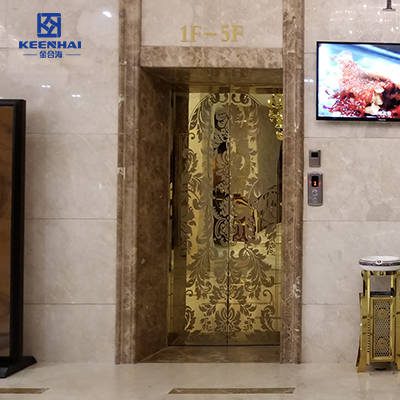
3. Types of Stainless Steel Elevator Doors and Their Costs
3.1 Single-Slide vs. Center-Opening Doors
Single-slide and center-opening doors are the two most common types of stainless steel elevator doors in 2025, and the cost difference between them can be significant. Single-slide doors operate by sliding to one side and are simpler in mechanism, which makes them ideal for residential or small commercial projects. They typically cost between $1,800 and $3,000, depending on material thickness and finish.
Center-opening doors, often used in high-traffic commercial buildings, slide outward from the middle and require more complex hardware, reinforced guide rails, and synchronization systems. As a result, they usually range from $2,500 to $5,500, particularly when paired with premium finishes or custom dimensions.
| Door Type | Operation | Typical Use | Price Range (2025) |
|---|---|---|---|
| Single-Slide | Slides to one side | Residential, low-traffic | $1,800–$3,000 |
| Center-Opening | Slides from center | Commercial, high-traffic | $2,500–$5,500 |
For example, a hotel lobby often prefers center-opening brushed steel elevator panels for smoother flow, whereas a private residence can achieve a modern look with single-slide stainless steel lift doors at a lower cost.
3.2 Fire-Rated and Decorative Stainless Steel Doors
Fire-rated doors and decorative designs add another layer of cost complexity. Fire-rated doors must meet strict regulatory standards, requiring special core materials, reinforced frames, and tested seals. These doors often add $500–$1,200 to the base price depending on size and certification.
Decorative stainless steel doors include laser-cut patterns, glass inserts, or etched logos, which increase fabrication time. For instance, a custom etched design on a commercial stainless steel automatic elevator door can add 15–25% to the cost. In residential projects, owners often choose minimal decorative touches to keep costs reasonable while still achieving a premium aesthetic.
That’s why it’s crucial to balance functionality with design when budgeting for fire-rated or decorative options.
3.3 PVD-Coated and Color-Finished Stainless Steel Doors
PVD-coated and color-finished doors represent the top tier of elevator door finishes. These coatings provide high scratch resistance, fingerprint protection, and long-lasting color, making them ideal for high-end commercial or luxury residential spaces.
-
Black titanium, bronze, or gold PVD coatings can increase the price by $400–$900 compared to standard brushed finishes.
-
Color finishes applied via powder coating or electroplating may be slightly cheaper but typically last less than PVD.
For example, a mirror-polished PVD stainless steel elevator door in a corporate headquarters can cost $5,000–$6,500, combining both aesthetic appeal and durability. Meanwhile, a standard color-finished residential lift door may remain under $3,500.
Overall, understanding the type of door and finish options early helps architects, contractors, and owners plan budgets more accurately and avoid unexpected cost escalations.
4. Installation and Additional Expenses
4.1 Installation Labor and On-Site Preparation Costs
Installation labor can account for 20–30% of the total elevator door budget. For a typical stainless steel elevator door, technicians first need to inspect the shaft, confirm measurements, and adjust frame alignment before installation begins. This preparation ensures the door operates smoothly and meets safety regulations.
Residential installations are generally straightforward, costing $300–$800 for labor, depending on complexity. Commercial or high-rise buildings require more coordination, often involving multiple technicians, scaffolding, and temporary access restrictions, which can increase labor costs to $1,200–$2,500 per door.
Step-by-step preparation usually includes:
-
Measuring the shaft and verifying level alignment.
-
Preparing and reinforcing the frame or opening.
-
Checking electrical connections for automated doors.
-
Installing temporary protection to prevent scratches during assembly.
In most cases, pre-installation planning can reduce delays and unexpected expenses, especially for customized or heavy stainless steel lift doors.
4.2 Hardware, Frame, and Mechanism Expenses
The mechanical components of a stainless steel elevator door significantly influence the total cost. High-quality rollers, guide rails, and synchronization motors ensure smooth operation and long-term reliability. Upgrading to a premium mechanism or fire-rated frame adds $400–$900 to the overall price.
| Component | Purpose | Cost Range (2025) |
|---|---|---|
| Rollers & Tracks | Smooth sliding | $100–$300 |
| Synchronization Motors | Center-opening doors | $250–$500 |
| Fire-Rated Frame | Safety compliance | $200–$600 |
| Decorative Handles / Panels | Aesthetic customization | $50–$200 |
For example, a commercial building installing center-opening brushed stainless steel elevator panels with reinforced fire-rated frames and precision motors may spend $3,500–$5,500 including hardware, while a small residential lift door with standard rollers may stay under $2,000.
4.3 Shipping and After-Sales Service Fees
Shipping can be a surprisingly significant factor in total costs. Stainless steel doors are heavy and require careful packaging to prevent scratches or dents during transit. Domestic shipping for a single door can range from $100–$400, whereas international freight may exceed $800–$1,200, depending on distance and carrier.
After-sales service is another key consideration, particularly for commercial installations. Many suppliers offer installation support, maintenance contracts, and warranty coverage, which may add $200–$500 per year to the long-term cost. Including these services upfront often saves money, as unexpected repairs or replacement parts for stainless steel automatic elevator doors can be costly.
Overall, planning for installation, hardware, and shipping early ensures accurate budgeting and reduces the likelihood of overruns, especially when combining custom finishes, large dimensions, or high-traffic usage.
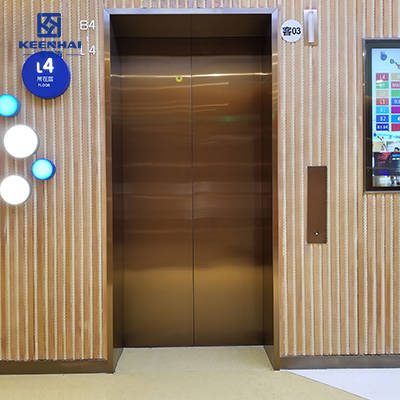
5. Cost Comparison: Stainless Steel vs Other Materials
5.1 Stainless Steel vs Glass Elevator Doors
Stainless steel elevator doors generally outperform glass in durability and maintenance cost. While glass doors offer a modern, transparent look, they are more prone to scratches, breakage, and fingerprint smudges, requiring frequent cleaning and occasional replacement. A standard glass elevator door costs $2,000–$4,000, but additional installation of protective films or reinforced panels can push the price above $5,000.
In contrast, elevatordøre i rustfrit stål offer excellent scratch resistance and corrosion protection, making them ideal for high-traffic commercial or luxury residential spaces. Over a 10-year lifecycle, the lower maintenance and replacement frequency can save thousands, making stainless steel doors a more cost-effective long-term choice.
5.2 Stainless Steel vs Aluminum or Painted Steel Doors
Aluminum and painted steel doors are lighter and initially cheaper, often ranging from $1,200–$3,000, but their longevity and resistance to wear are weaker than stainless steel. Painted steel can chip or rust over time, particularly in humid environments, leading to repainting or replacement costs.
| Materiale | Initial Cost | Holdbarhed | Opretholdelse | Long-Term Value |
|---|---|---|---|---|
| Rustfrit stål | $1,500–$5,500 | Høj | Lav | Høj |
| Aluminum | $1,200–$3,000 | Medium | Medium | Medium |
| Painted Steel | $1,300–$3,500 | Medium-Low | Høj | Lav |
| Glass | $2,000–$5,000 | Medium | Høj | Medium |
For example, a high-rise office may spend more upfront on brushed or PVD-coated stainless steel lift doors, but avoids repainting and replacement costs that aluminum or painted steel would incur over time.
5.3 Why Stainless Steel Offers Better Long-Term Value
The long-term value of stainless steel elevator doors is unmatched. Not only do they resist corrosion, dents, and scratches, but custom finishes and PVD coatings can maintain a premium appearance for decades. Even in residential projects, the slightly higher initial investment pays off in durability and minimal upkeep, making them an ideal choice for homeowners and architects seeking reliability and aesthetics.
If you want to explore high-quality options, check out pvdstainlesssteel’s full range of stainless steel elevator solutions, which includes commercial, residential, and Revit-compatible models suitable for various project scales.

